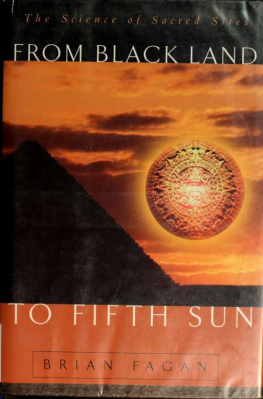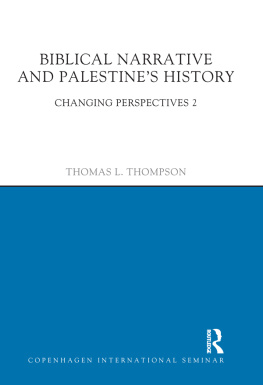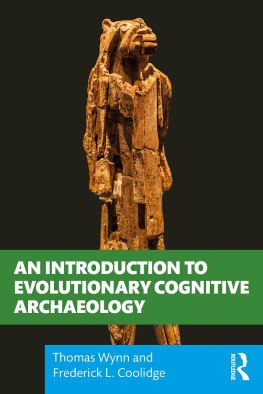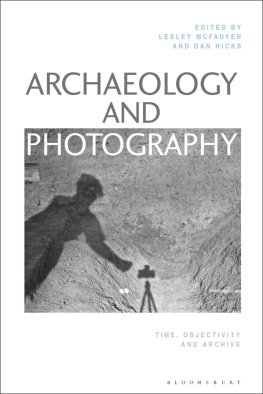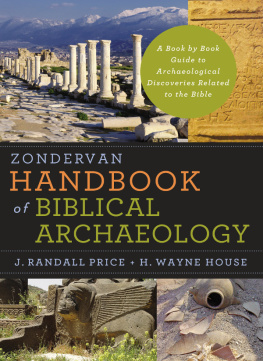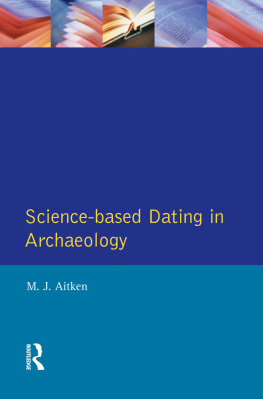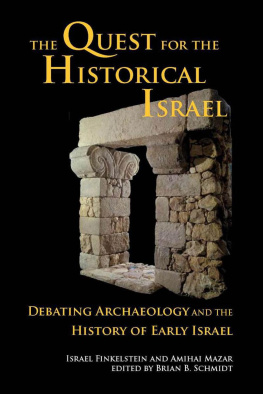First published 2010 by Equinox, an imprint of Acumen
Published 2014 by Routledge
2 Park Square, Milton Park, Abingdon, Oxon, OX14 4RN
711 Third Avenue, New York, NY 10017, USA
Routledge is an imprint of the Taylor & Francis Group, an informa business
Thomas E. Levy 2010
All rights reserved. No part of this book may be reprinted or reproduced or utilised in any form or by any electronic, mechanical, or other means, now known or hereafter invented, including photocopying and recording, or in any information storage or retrieval system, without permission in writing from the publishers.
Notices
Practitioners and researchers must always rely on their own experience and knowledge in evaluating and using any information, methods, compounds, or experiments described herein. In using such information or methods they should be mindful of their own safety and the safety of others, including parties for whom they have a professional responsibility.
To the fullest extent of the law, neither the Publisher nor the authors, contributors, or editors, assume any liability for any injury and/or damage to persons or property as a matter of products liability, negligence or otherwise, or from any use or operation of any methods, products, instructions, or ideas contained in the material herein.
Library of Congress Cataloguing-in-Publication Data
A catalogue record for this book is available from the Library of Congress
ISBN | 978-1-84553-258-1 | (hardback) |
978-1-84553-257-4 | (paperback) |
Typeset by Forthcoming Publications Ltd
For Norma Kershaw
Visionary, patron of archaeology in the Levant, and dear friend
With affection
TEL
Contents
Thomas E. Levy
I.
INTO THE FUTURENEW TRENDS IN HISTORICAL BIBLICAL ARCHAEOLOGY
Thomas E. Levy
Shlomo Bunimovitz and Avraham Faust
Avraham Faust
David Ilan
Aaron A. Burke
II.
SOME APPLICATIONS
Miroslav Brta
Aaron J. Brody
Assaf Yasur-Landau
Ann E. Killebrew
Eveline J. van der Steen
Daniel A. Frese and Thomas E. Levy
III.
FROM TEXT TO TURF
Tara Carter and Thomas E. Levy
William M. Schniedewind
Ronald Hendel
Baruch Halpern
Jodi Magness
IV.
IN PERSPECTIVE
Aren Maeir
Richard Elliott Friedman
David Goodblatt
Jodi Magness
Alexander H. Joffe
William G. Dever
Thomas E. Levy
The archaeology of the southern Levant is synonymous with the Holy Landthe region that includes modern Israel, Jordan, the Palestinian territories, Lebanon, Syria, and the Sinai Peninsula. This land bridge between Africa and southwest Asia and the two core areas of ancient Near Eastern civilizationEgypt and Mesopotamiahas played a central role in the evolution of human societies from the emergence of modern humans in the Middle Paleolithic over 200,000 years ago to the changing dynamics of global politics today. Relatively recently in this long sequence of social change, some 6,000 years ago, scholars begin to trace the origins of Monotheism and the Abrahamic tradition that is so central to three of the great world religionsJudaism, Christianity, and Islam. To be fair, there are other Holy Lands around the world from Indias fertile Tamil Nadu region to the peak of Mt. Shasta in northern California. However, statistics from the Encyclopedia Britannica indicate that over 50% of the world population belongs to one of the monotheistic religions whose roots are in the ancient Near East. The Hebrew Bible or Old Testament is central to these three great religions in different ways and levels of commitment. Written primarily in Biblical Hebrew and some Aramaic, the Hebrew Bible is the Jewish Bible. In Christianity, the Old Testament forms the first of the two-part Christian Biblical canon. For Islam, both the Hebrew Bible and New Testament are regarded as divinely revealed works and Muslims are especially familiar with biblical personages and events as presented in the Koran. This very short apologia is a simple testimony to the fact that there are an incredibly large number of people on the planet who have a direct or indirect relationship with the Hebrew Bibleas a sacred text that continues to play an unusually powerful role in Western and Middle Eastern culture from religion to the arts. For these reasons, there is a huge audience, religious and secular, interested in the historicity of the Hebrew Bible.


